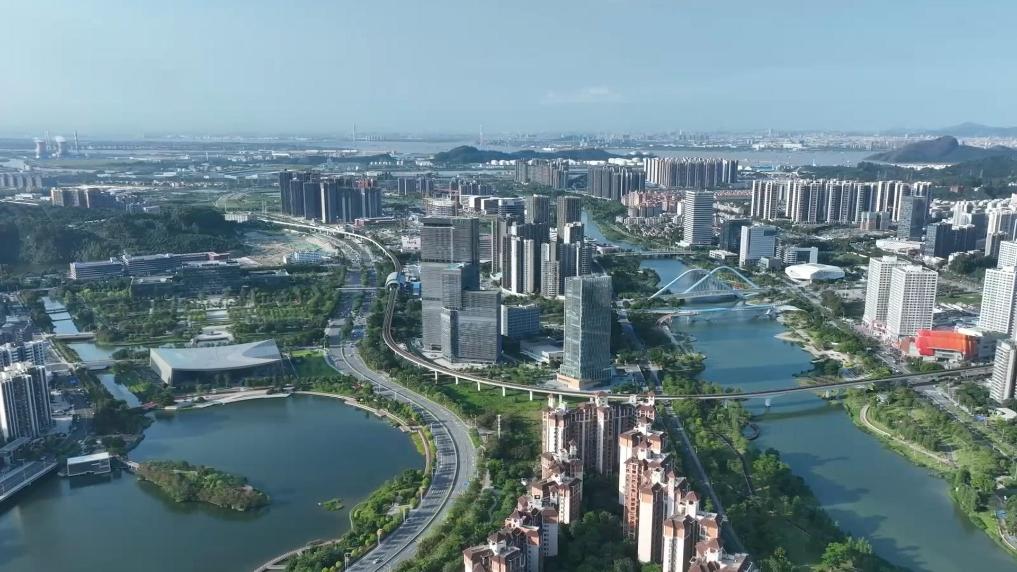(China Economic Roundtable) Xinhua Headlines: China's economic development zones aim for greater role in reform, opening up
Source: Xinhua
Editor: huaxia
2025-07-14 20:43:32
* The first 14 national-level economic and technological development zones were established in 12 coastal cities during the initial years of China's reform and opening up over four decades ago.
* Such zones have been trailblazers in institutional innovation, foreign investment and economic growth, setting the pace for China's reform and opening-up endeavors.
* Looking forward, these zones need to further improve and innovate in areas ranging from development positioning to institutions in a bid to shoulder greater responsibilities in the next phase of high-standard opening up, in-depth reform and high-quality development.
BEIJING, July 14 (Xinhua) -- During the initial years of China's historic journey of reform and opening up over four decades ago, the first 14 national-level economic and technological development zones were established in 12 coastal cities. Today, there is a vast network of 232 such zones right across the country, serving as vital engines of development.
In the latest episode of China Economic Roundtable, an all-media talk show hosted by Xinhua News Agency, a commerce official, a zone administrator and an executive of a foreign-invested company convened to explore the evolving role of these zones in shaping China's next phase of high-standard opening up, in-depth reform and high-quality development.
National economic development zones are not only economic powerhouses but also key windows for global engagement, said Ji Xiaofeng, an official in the Ministry of Commerce's foreign investment department.
Notably, such zones are home to more than 60,000 foreign-invested enterprises and around 99,000 firms engaged in foreign trade.
In 2024 alone, national economic development zones accounted for about one-quarter of China's utilized foreign investment and trade volume. Collectively, they generated a regional GDP of 16.9 trillion yuan (about 2.36 trillion U.S. dollars) and housed over 4.9 million market entities, including 73,000 major industrial enterprises and 85,000 high-tech firms.
Looking forward, Ji said these zones need to further improve and innovate in areas ranging from development positioning to institutions in a bid to shoulder greater responsibilities in fostering development and expanding opening up.
To this end, the Ministry of Commerce recently unveiled a work plan with 16 targeted policy measures including developing new quality productive forces, elevating economic openness and deepening reforms of management systems.
INNOVATION-DRIVEN DEVELOPMENT
China's national economic development zones have started to speed up their innovation efforts, seeking to foster new growth drivers.
Suzhou Industrial Park, founded in 1994 in east China's Jiangsu Province as the first inter-governmental cooperation project between China and Singapore, exemplifies this development trend. This industrial park leverages global partnerships and its free trade status in a quest to become a world-class high-tech park.
Shen Lei, deputy director of the park's management committee, highlighted its focus on attracting global resources and integrating technological and industrial innovation.
National economic development zones now account for 18.3 percent of China's high-tech enterprises and host more than 700 state-level incubators and innovation spaces.
"They boast high industrial concentration and solid manufacturing foundations, making them ideal for developing new quality productive forces tailored to local strengths," Ji said.
These zones have become powerhouses for strategic emerging industries. In southwest China's Sichuan Province, for example, the Yibin zone has built the world's largest single-site power battery production base featuring a 180 GWh capacity. Another zone in northwest China's Shaanxi Province, meanwhile, boasts complete industrial chains from aviation equipment to satellite applications.
More efforts will be made to cultivate modern industrial systems in national economic development zones, centered around sectors such as biomedicine, new energy and materials, aerospace, high-end equipment manufacturing and artificial intelligence (AI), Ji revealed.
PIONEERS OF OPENING UP
Over the past decades, national economic development zones have been trailblazers in institutional innovation, foreign investment and economic growth, setting the pace for China's reform and opening-up endeavors.
These zones have explored free trade pilot synergies to foster breakthroughs in areas including resource flows, rights protection and market regulation. Some have also proactively aligned with high-standard international trade rules to enhance their institutional openness, Ji said.
"The strategic location, industrial chains and policy support of these zones make them highly attractive for Panasonic to make investments in China," said Zhao Bingdi, president of Panasonic China.
A 47-year veteran of the Chinese market, Panasonic operates in national economic development zones of eight cities like Beijing, north China's Tianjin and Shanghai. Its 2024 fiscal year sales in China approached 100 billion yuan -- nearly a quarter of Panasonic's global revenue.
"China is not just a manufacturing giant but a major consumer and innovation hub, offering vast opportunities for foreign firms," said Zhao. He added that recent policies supporting technological platforms and the integration between the digital economy and the real economy will facilitate Panasonic's investments in areas ranging from AI to new energy.
Experts noted that the latest reform measures concerning China's national economic development zones will provide foreign firms with a higher-level platform, thereby encouraging increased R&D investment and deeper collaboration with local enterprises. Thanks to improving industrial ecosystems, global companies will be able to seize greater opportunities in China's vibrant market. ■
(Video editors: Zhang Yucheng, Mu Xuyao and Wang Han.)











Comments